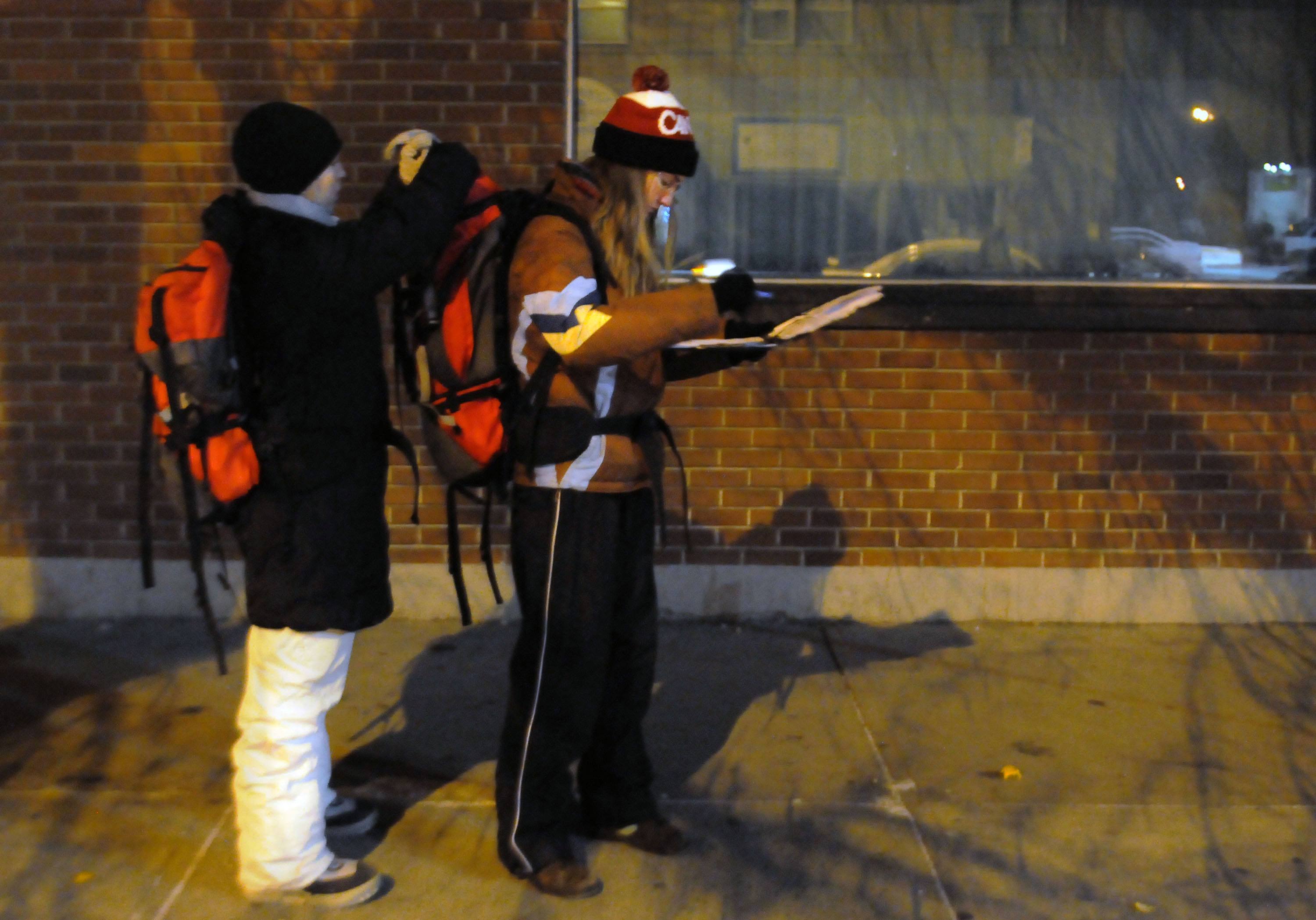After making their stop at the People’s Place and handing out harm reduction supplies, Jessica Kvisle and Ashley Fleming, staff with the NightReach program that is run by the Central Alberta Aids Network (CAANS), stomp through the snow and walk over the old train bridge that spans the Red Deer River. Kvisle pulls out the flashlight and steps under the bridge.
When she finds no one, they keep walking along the paths just south of the ice-covered river up to 55 St.
Kvisle has a practical nursing exam the following day and laughs that she’ll get ready for it in the morning. She sends text messages on her flashy new smart phone as the two walk in the cold and wait for a light to turn green.
What started as the pursuit of a medical degree has shifted into an aspiration to be a street nurse, a medical professional who has direct contact with the marginalized and vulnerable. Encountering people who battle addiction is “real life,” not clinical, and especially meaningful work to her.
“What do you get when you cross an elephant with a rhino?” the next man the women meet asks when he stops them; his two friends recognized the red backpacks. The group laughs at the punch line.
After some small talk, the jokester’s friend timidly asks for an inhalation stem. With some market value, NightReach has a policy of handing one stem per person per night. The stems can be used perpetually, but disappear, are sold, or broken by users emphatic that they’ll never smoke crack again.
Fleming knew virtually nothing about drugs until her work with NightReach.
The mouthpiece they hand out with the inhalation stems, she explains, keep drug users from burning their lips when they smoke crack. Exposed skin from a burn means the possibility of blood residue left on the stem. If shared, the residue could transmit Hepatitis C.
Both women have wondered at different times if they merely enable addicts by handing out drug paraphernalia, but always circle back to the program’s mandate of harm reduction.
They start to walk to Rotary Park and talk at length about the public perceptions of addicts and sex workers who are especially at risk to HIV and other diseases.
“I can see myself making the same decisions these people have made if I was in their position,” Fleming says without a second thought. She explains that her job isn’t to judge or even ask what at-risk individuals are doing but to better protect them from further harm.
“Everyone has a story.” The words hang in the air like the white clouds of breath the women exhale in the cold Alberta night.
“I think there’s someone there,” Kvisle says, under the shelter at Rotary Park.
The women confidently walk up to a man sitting at a picnic table in the cold and dark. They introduce themselves and explain who they are and what they do.
The man, Fred, has come from out of town to be with his mother, in a coma at the nearby hospital. Her life, they learn, hangs in the balance.
“I came here to get away and think,” Fred confesses. “Do you mind if we talk?” He asks if he can walk with them to the downtown. As cars rush by, Kvisle and Fleming banter with him.
The happenstance of their encounter with Fred informs their gait which seems lighter in their heavy boots.
They part ways at the Buffalo, the former hotel converted into a housing solution to get people off the streets. It’s is a place where, no matter their background, people can get housing first, even if they have no credit or struggle with addictions or mental health issues.
A woman in a winter coat and toque snores peacefully with her head on a table. Kvisle and a man covered with tattoos start to talk.
Fleming hands out some items and when Kvisle’s conversation winds down, they decide to make their way back to CAANS. It’s been a slower night than usual.
Gord, a staff member at the Buffalo, pronounces a blessing over the women as they walk back out into the cold.
When they return to the office, young men in wide brimmed ball caps, hoodies, and over-sized skate shoes step out of a large truck and walk into the exotic dance club next door. A young woman in impossibly high stiletto heels hunches in a long overcoat. She laughs loudly with a man outside the club.
It’s only 10:30 p.m., but the nightlife downtown is just starting to awaken. There are hundreds of other stories to play out tonight, some of which will determine whether or not CAANS and its staff will be busy in the morning.



